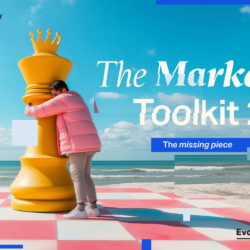Who cares? It’s not just a rhetorical question thrown around when apathy hits hard. In a world where care is a currency, understanding its dynamics is crucial for individuals, institutions, and brands alike. So, let’s dive into the care conundrum with a sprinkle of wit and a dash of Spartan brevity.
The individual care quotient
Firstly, let’s talk about you. Yes, you, the reader. How well are you caring for yourself? In the hustle of life, self-care often takes a backseat. But remember, self-care isn’t selfish; it’s self-preservation. It’s not about indulgent spa days or extravagant vacations (though, those are nice too). It’s about understanding your limits, setting boundaries, and respecting your mental health. It’s about being kind to yourself, even when the world isn’t.
Institutional care: a mixed bag
Moving on to the grand structures of society — our beloved institutions. These entities are designed to care for, protect, and serve. But do they? The answer is a complicated cocktail of yes, no, and maybe. Institutions, like humans, are fallible. They might provide a safety net but often with holes large enough for many to slip through. The key is not to blindly trust but to actively engage, question, and hold accountable. After all, care shouldn’t be a one-way street.
Brands stepping up (or not)
In the gaps left by institutions, brands and businesses often step in, wearing the cape of corporate social responsibility (CSR). But beware of the wolf in sheep’s clothing. While many brands genuinely contribute to societal welfare, others use care as a marketing strategy, a box to tick off in the grand scheme of public relations. As consumers, it’s our job to differentiate between performative allyship and genuine commitment. So, scrutinize, analyse, and then decide where your loyalty lies.
Injecting care into work
Work is where we spend a significant chunk of our lives. Hence, it’s imperative for care to be embedded in the very fabric of the workplace. It’s not just about ergonomic chairs and free coffee. It’s about creating an environment where employees feel valued, heard, and respected.
It’s about fostering a culture that prioritizes mental health and work-life balance over toxic productivity. Employers, take note; care is not a perk, it’s a necessity.
The creator economy: a care conundrum
In the burgeoning creator economy, care takes a different form. Here, creators are both the brand and the individual. They are the product and the consumer. In this delicate dance, care becomes a balancing act. Creators must care for themselves while building a brand that cares for its audience.
It’s a tightrope walk, but with authenticity and transparency, it’s possible to build a brand that is both caring and profitable.
Generative AI and blockchain: the care catalysts
In my realm of expertise, Generative AI and blockchain are not just buzzwords; they are catalysts for care. Generative AI can personalize care, making it more efficient and effective. It can automate mundane tasks, allowing humans to focus on what truly matters — caring for themselves and others. Meanwhile, blockchain brings transparency and accountability to the table, ensuring that care is not just promised but delivered.
Conclusion: care is everyone’s business
So, who cares? We all should. Care is not the responsibility of individuals, institutions, or brands alone. It’s a collective effort, a societal commitment. It’s about creating a culture where care is not just given but received, acknowledged, and reciprocated. In a world often marred by indifference, let’s make care the norm, not the exception.
Remember, care is not just a noun; it’s a verb, an action, a responsibility. So, let’s care, genuinely, consistently, and unapologetically. Because in the end, care is what makes us human, and it’s high time we embrace it, in work, life, and everything in between.
Featured image: Alexandra Oance / Unsplash





























